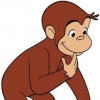Hi Bobby,
Thought I’d read through this thread and see how data from New Hampshire, Maine, and eastern Canada (126 possible encounters reported) stacked up against some of the SSR stats. Of course, the SSR and my database use different things, so there are some “apples-to-oranges” comparisons here.
I first looked at moon phase data. 32 encounters, or roughly 25% of the total, provided either a definite description of the moon phase or enough information to determine same. I’ve now divided up each lunar cycle into 10 periods three days in length (for those who need to visualize this, see a lunar calendar for October 2016, which started and ended on a new moon). These 32 encounters occurred:
3 - the night of the new moon, + 2 nights after the new moon
7 - waxing crescent moon (3-5 nights after the new moon)
2 - waxing gibbous moon (9-11 nights after the new moon)
4 - the last three days before the full moon
4 - the night of the full moon and two nights afterwards
3 - Nights 3-5 after the full moon
3 - Two nights before, and the night of, the quarter moon
4 - three nights after the waning quarter moon
2 - the last three nights before the next new moon.
I did not realize this until just now, but fully 50% of encounters where the moon phase can be identified occurred on the darkest 12 nights of the lunar cycle.
42 encounters involved some type of vocalization; of these, 22 (or just over ½) involved an encounter where the witness heard something, but did not see anything. Of those 22 encounters, only 6 are from the fall; the easy majority (9) are from the summer months. However, 18 of 22, or 82%, are during dusk through dawn.
Just going across the board for this area (not breaking it out seasonally), 36 (or 29%) of the encounters occurred when the witness was traveling (driving, walking, biking) in some way along a road. These encounters are split 50/50 between daylight hours and dusk-dawn.
I’ll look at, and add, some more stats later.


